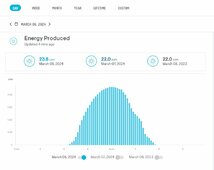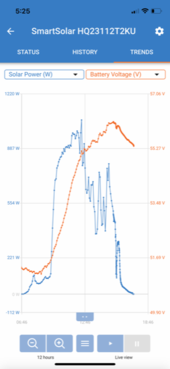corporal_Canada
New Member
i actually find that using youtube to be difficult for information difficult as the majority comes from India/Bharat and i have my doubts that they are doing things correctly as their education isnt anytwhere near that of my frigid home... i use my little DC knowledge from tesla engineering class and my automobile mechanics school....My 2 cents -
Not what you said wrong per say, it is that you ask for advice and then refuse to take any of it.
You also haven't educated yourself on the fundamentals of very basic electricity. You can do this watching youtube to understand current, voltage, and resistance. You have been on here since August asking mostly the same questions over and over.
Playing with solar and batteries and wiring without understanding the first thing about them is a recipe for a fire or worse. Even a car battery can be dangerous when pushed over its limits, but most people don't think of that. Most think that at 12v they can just do whatever and nothing bad will happen.
Your pocket book means for every choice you have to cut corners or you are heavily inclined to. Everyone has the same choice except the uber wealthy. You moved to the Philippines for a cheaper cost of living. We all get that. Nothing wrong with that in fact. But a trade off is that it is harder to get quality parts for a reasonable price. Instead you are hood-winked by your neighbors because you don't understand the first thing about electricity.
Now - I am going out on a limb here and going to say you either didn't visit a local shop that might sell what you want and need and explain everything about it, or you did and didn't like the prices so you ordered online to save money and you have instead wasted money. I could be totally wrong about that.
If you want more help there are others that will give it, but they will have the expectation you can understand their answers when put in layman terms. If you can't do that then just spend some time reading the forum and watching videos about how stuff works verse just 'how to do it'. Every project is different and to adapt you need to understand why things are done or know when an answer is right verse a guess.
So, the safest thing I can recommend to you at this point is to -
Read and watch videos until you know how to measure current, voltage, and resistance.
Know the difference between PWM and MPPT SCC.
See what the average watts per square meter of current solar panels are.
Know how batteries are rated and what types there are. You should be looking at LFP (LiFePO4).
Know what the average weight is for the battery size you are interested in.
Know the common types of fuses you might need. (MRBF, ANL, Mega, class T)
Know what size wire can carry what amps safely - this is important to not starting fires.
Know what connectors go on the ends of the wires - a crimper, lugs, and wire are a lot cheaper than buying pre-made. And a bad crimp (one done with just a pair of plyers) is a fire hazard. and you loose watts through it.
Realize if something is to good to be true when pricing things, it is. A local store can't sell a 1000w inverter for $5 so the online shop can't either.
Then once you know all that the next step is to go see the guy in town and see if he offers a turn-key solar system that is small. Then look at every piece he lays out and see if what he is telling you is correct. Question him if it isn't. When I was there 35 years ago the locals would take any advantage they could of you, dunno if that has changed or not. But, if you know the normal size for a 100w panel and he brings out one 1/4th the size you know he isn't being truthful and you can call him on that. If he brings out an 80lb battery that is supposed to be a LFP (and is marked as such) weighing 40lbs you can call him on it. If he brings out a SCC marked as MPPT but it is as small as the one you currently have you can call him on it. After a couple times he will either bring out the stuff you want or you can leave.
Only by being an educated customer there can you keep from being taken advantage of. AND - if something doesn't work out you can take stuff back and ask questions
And, NOTE - if you think someone is offering bad advice be prepared to offer up why you think it is bad. Then listen to what they explain about it.
not sure how i got to this point but i have this feeling that if you pour anything into a battery .. like pitcher that it will stay and be stored... yes i google certain queeries but i almost never put it into practice unless i can confirm its effectiveness.. like the epsom salt thing and no i didnt try yet...however i did order a trickle charger.. just in case i ever need one.. yes im skeptical to series link batteries because im not familiar with anything more than the 12v common in most cars...




